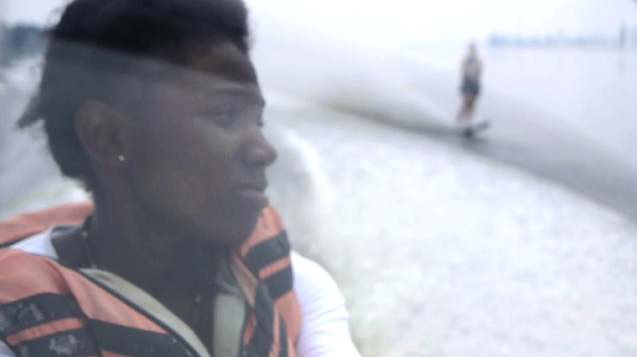EH
You were talking about Cleveland. In so many of your films you’re invested in exploring a particular time and place, and that place is most often Ohio, where you grew up.
Well, I was on the east side of Cleveland, and I couldn’t tell people on the east side of Cleveland ‘Hi, we’re black’ because everyone knew it. You just had to move on. You couldn’t do identity politics then. I was surrounded by it. I used to say back then that I was not trying to re-do the wrong. I didn’t want to re-make “A Birth of a Nation.” I want to create. I did not want to use the repressive language to formally make art. I wanted to visit other forms.
EH
What I find to be one of the most compelling things about your work is the way in which you’re creating a very unique language for cinema. This has been evolving. I feel like you’re always exploring – and I think the best filmmakers really do this – how to find your own audio-visual language, how to use words and images and sound to say what you want to say, and thinking about how these things come together.
But to get back to identity for a moment – despite that fact that your work is often grounded in Ohio, you’ve also made films around the world. And you yourself have said, that you’re interested in work of people of African descent worldwide, so isn’t that a gesture towards some kind of broader identity, beyond the very local?
You probably mean the film I shot in Brazzaville, Congo. I was trying to make Brazzaville look like St. Louis. I was trying not to make it look so called ‘foreign’. You just see people going to work. I go to work, my uncles go to work, my cousins go to work, you know… And in “Brazzaville,” I show a couple looking for a bed. I was just looking for those kinds of gestures and that kind of movement? Most of if was made up. I mean I used actors.
EH
I think “BZV” is such a beautiful film. It’s one of those films that’s on this knife’s edge between ‘is this a fiction?’ and ‘is this documentary?’ It’s partaking of both modes simultaneously.
When we were at Flaherty film seminar in 2002, you said that I use reality as a device, and I’ve been using that line ever since.
EH
I don’t remember I said that!
I remember you were saying that, and I said, ‘Yeah, yeah.’ I do use reality as a device but I make it look like it’s real or something, but it’s not real. It’s film, it’s the materiality of film, the audience knows it’s fake.
I’m influenced by the Swiss artist duo Peter Fischli and David Weiss. I like the fact they have those exhibits where they carve everything. They make those tools and those ladders to look like real objects that are part of a gallery show change. I like that kind of artwork. It’s the kind of level of abstraction and reality that comes together at the same time. It’s when abstraction and reality they come together at the exact same moment. There’s this huge intentionality there, and it’s so perfect. It shouldn’t work but it does. I’m forever striving for that goal.



